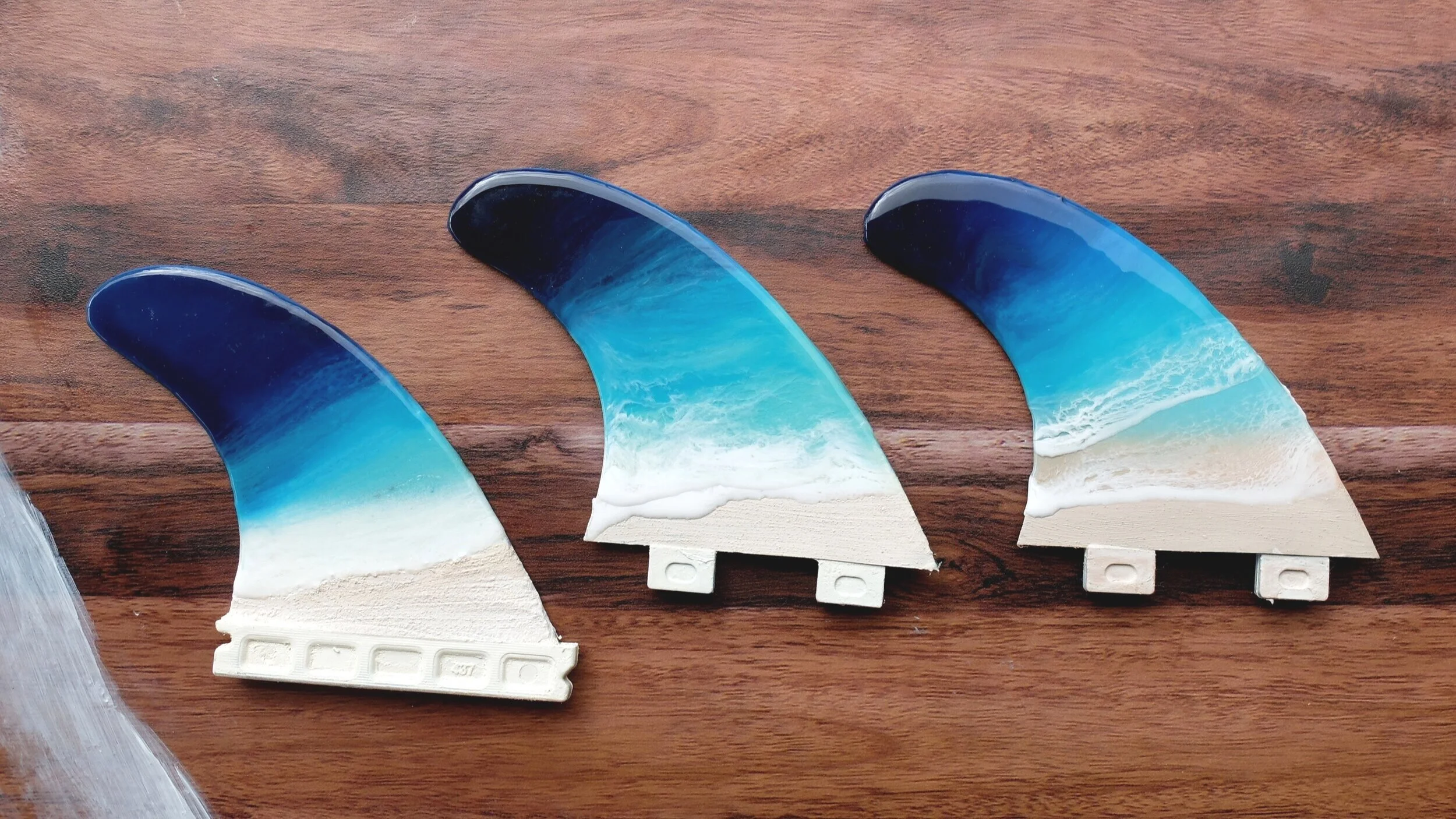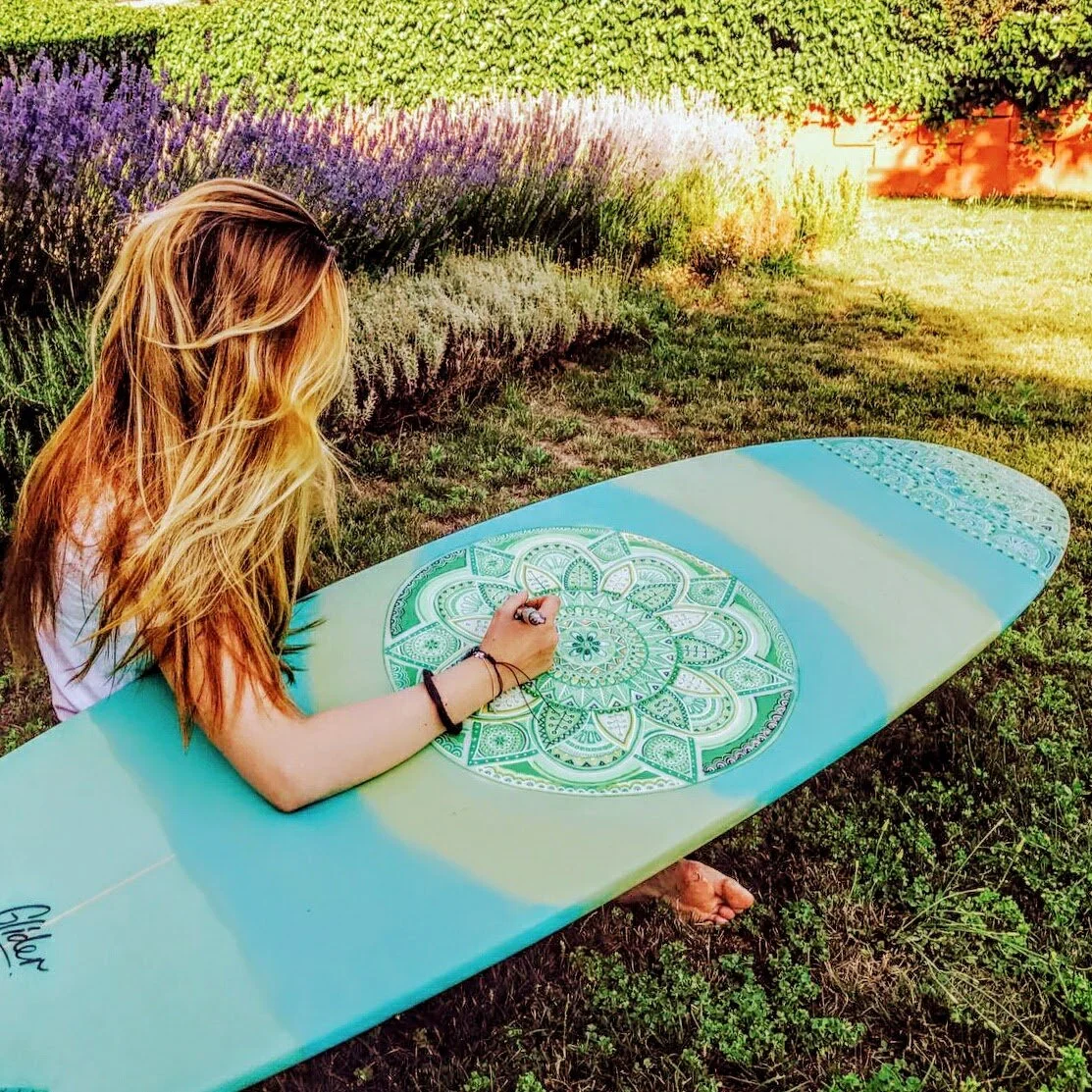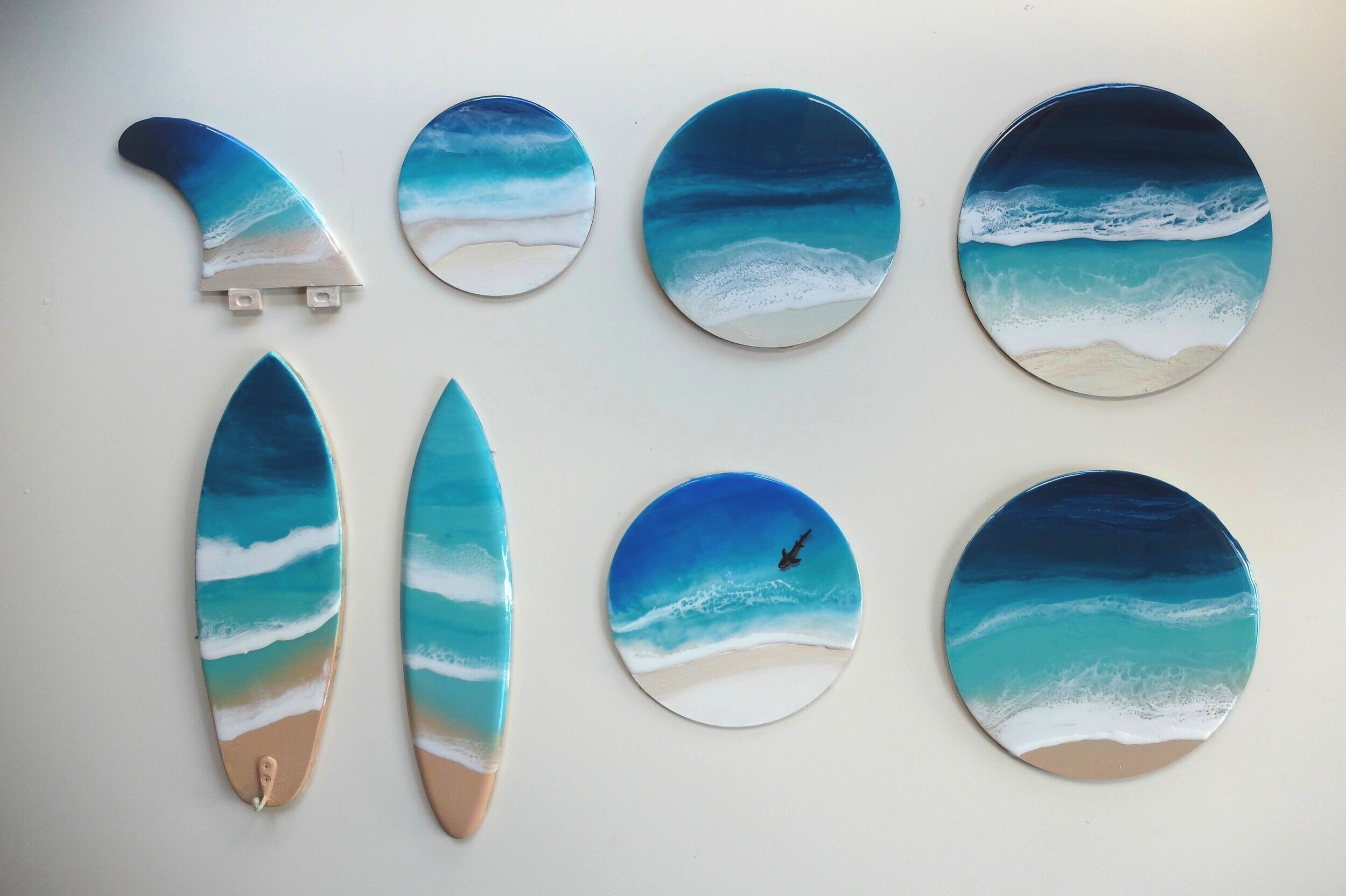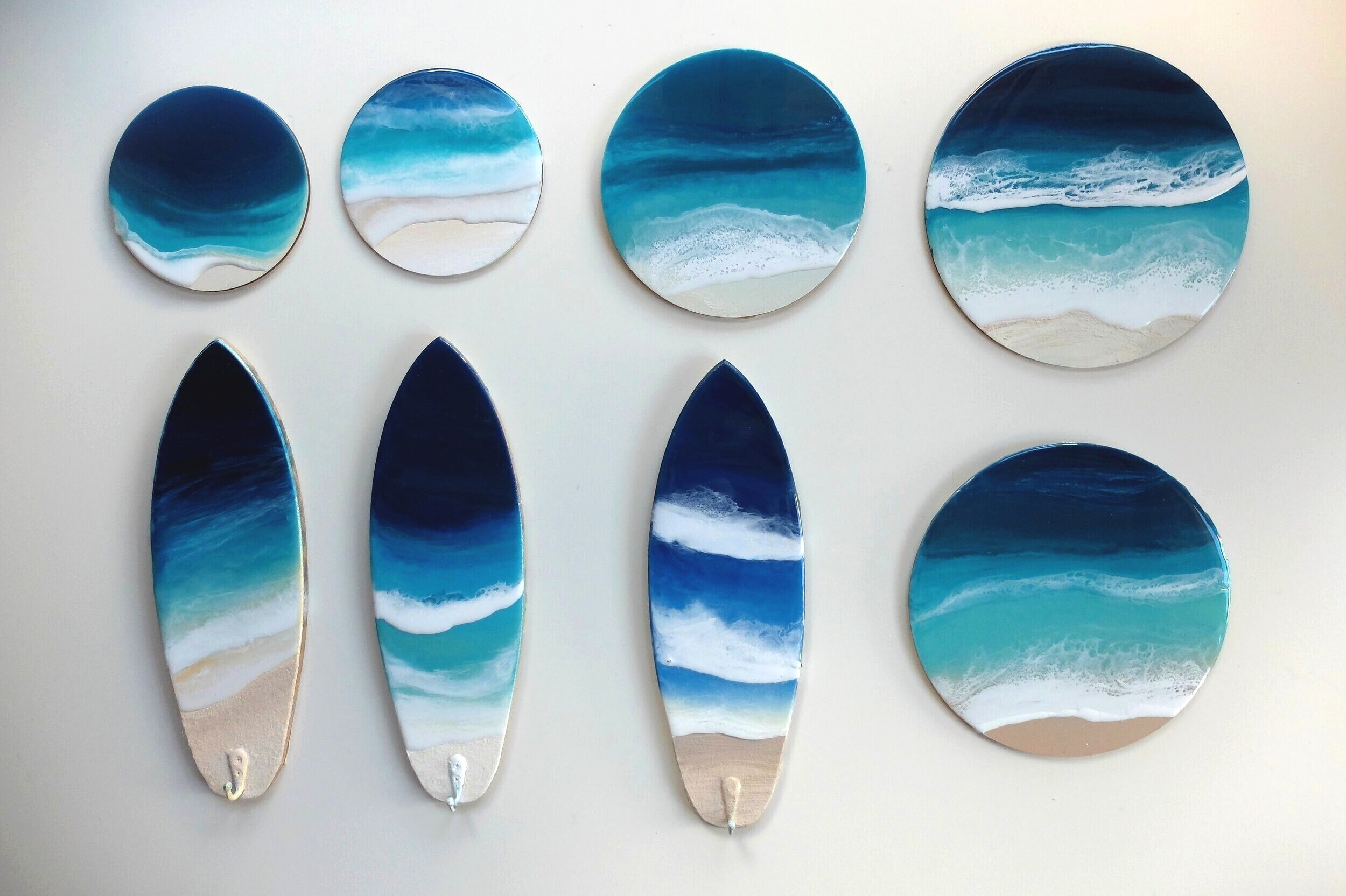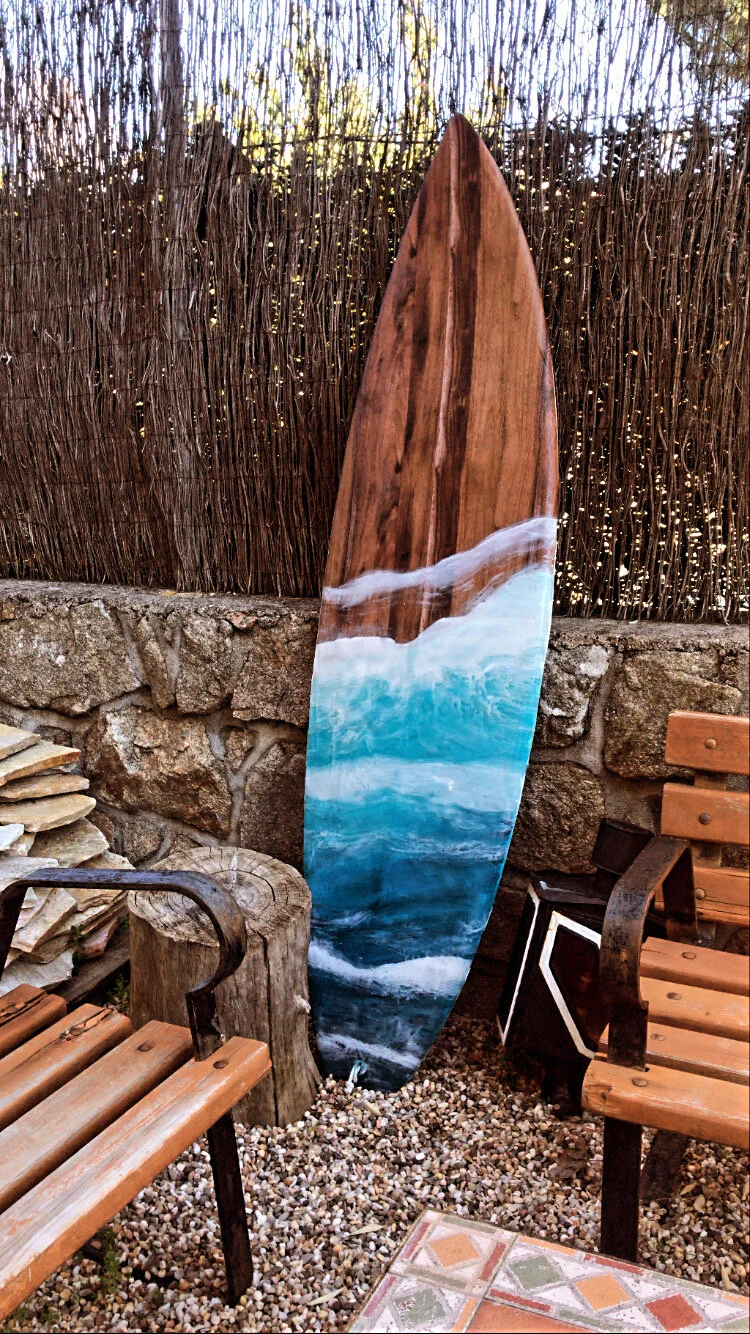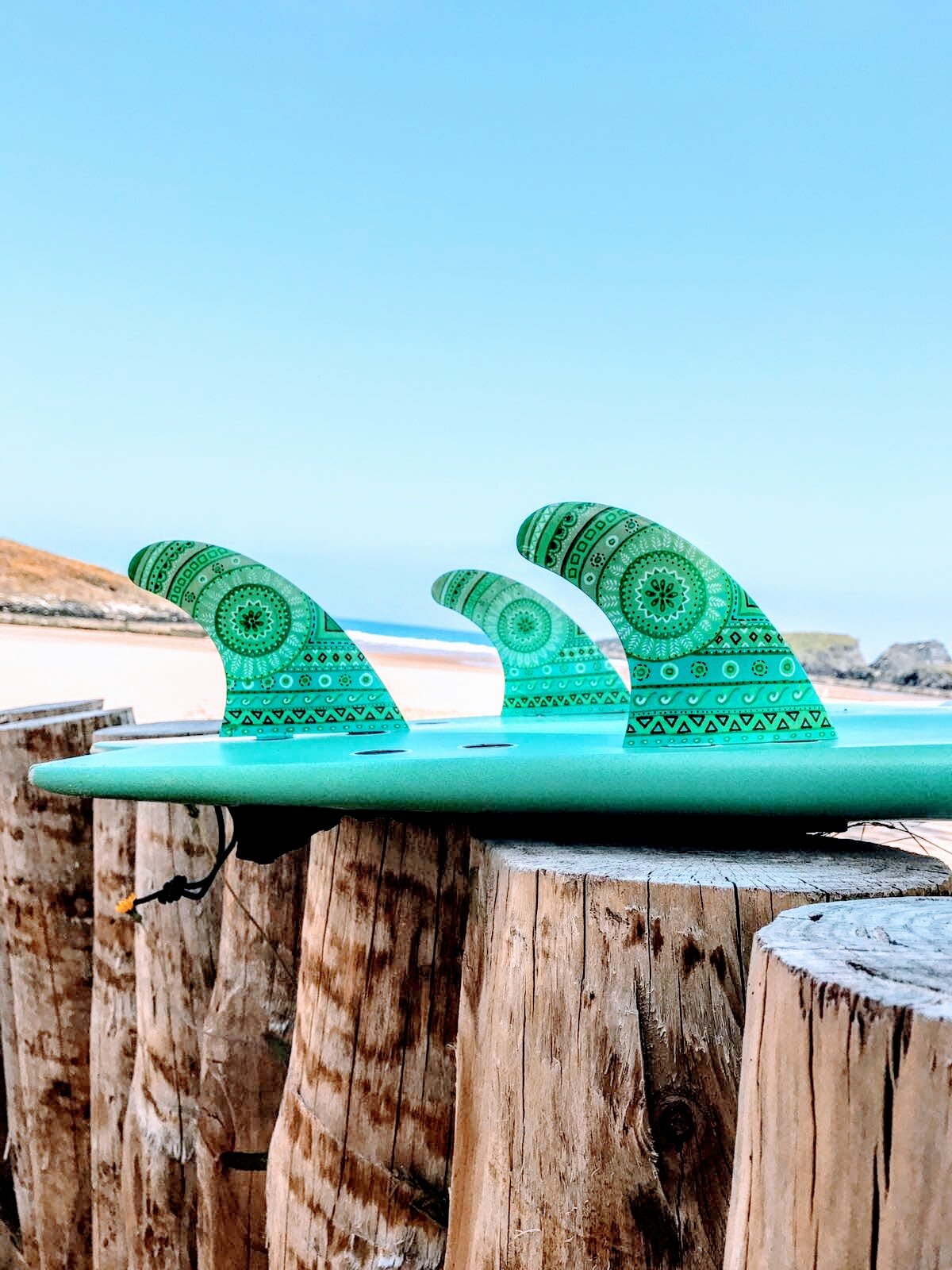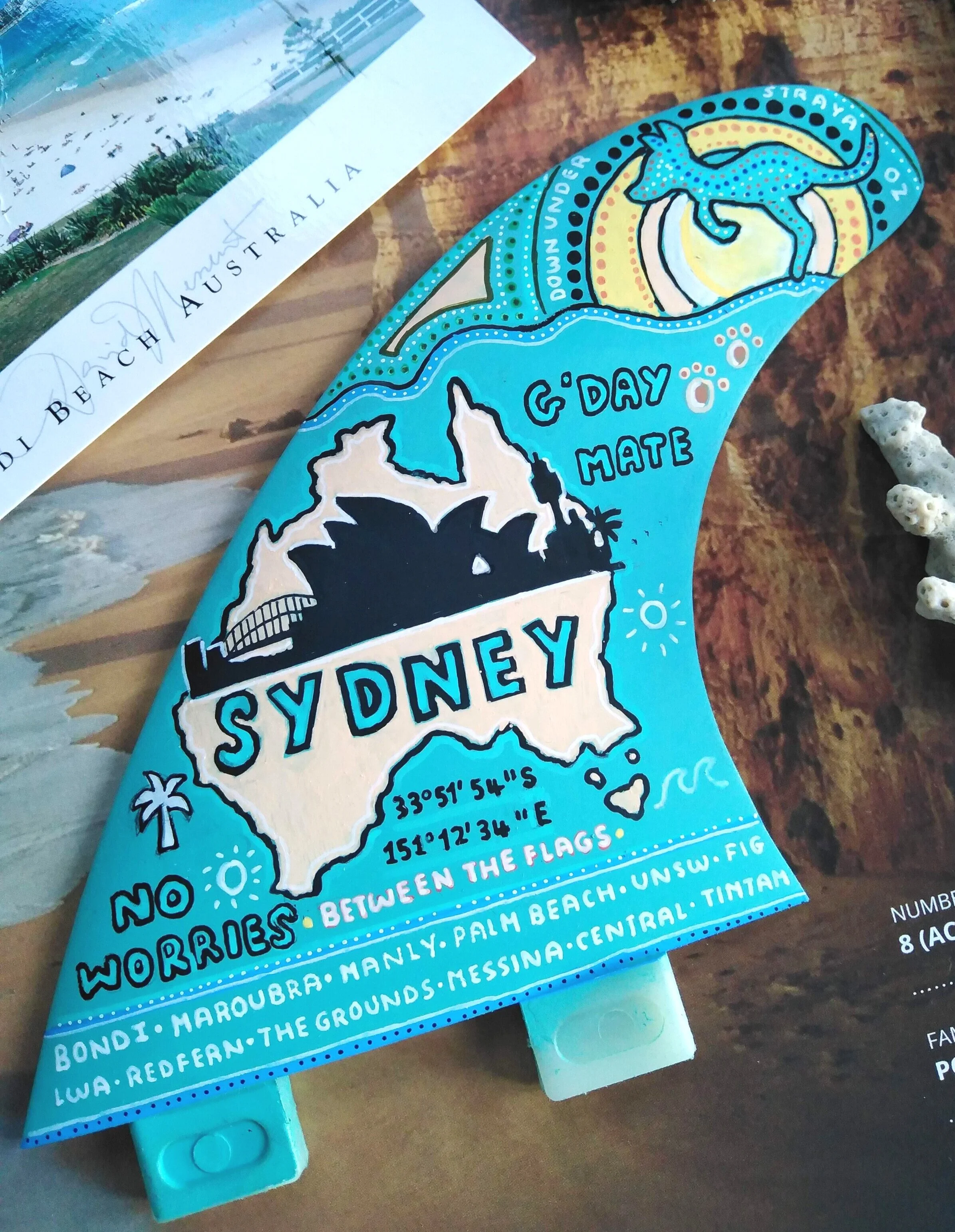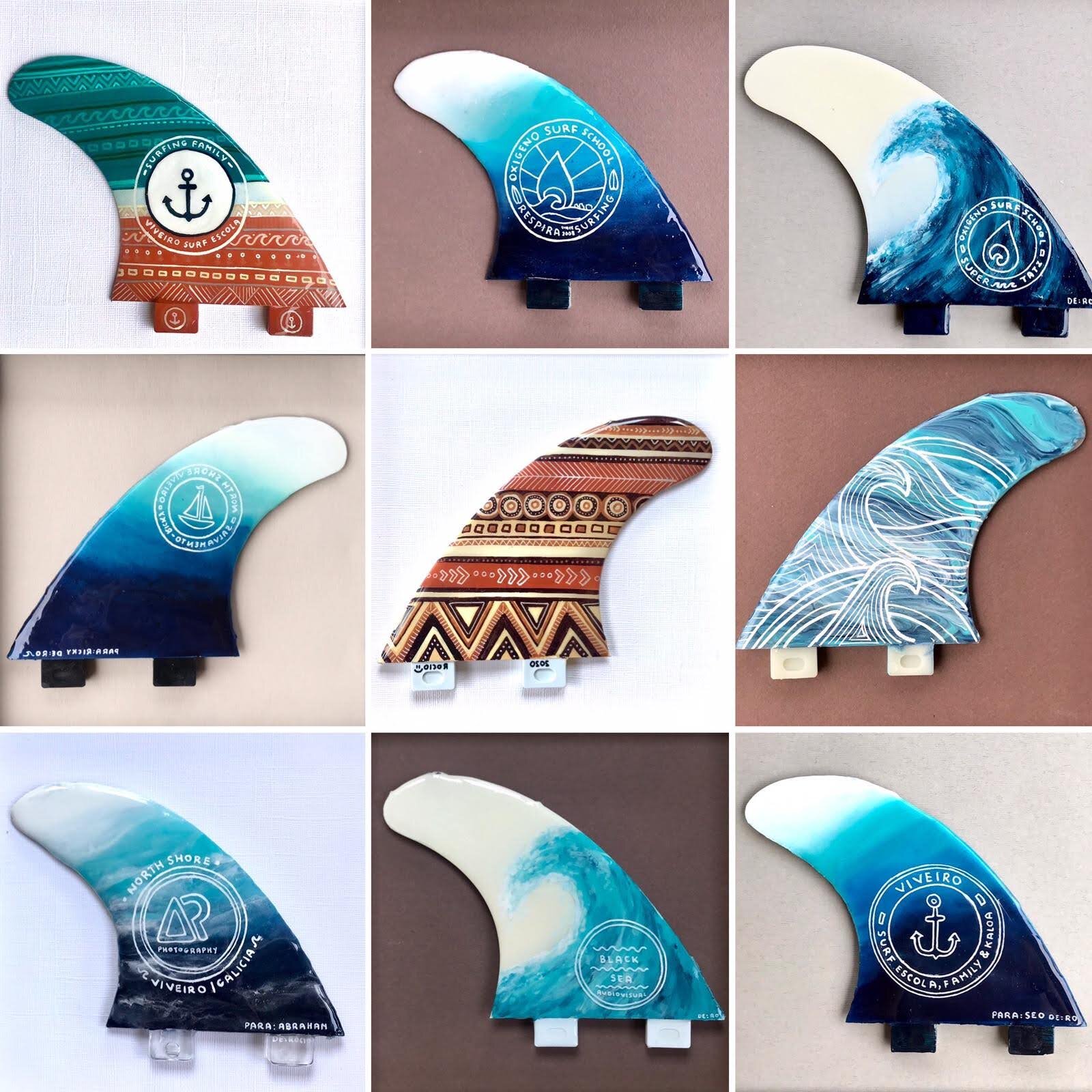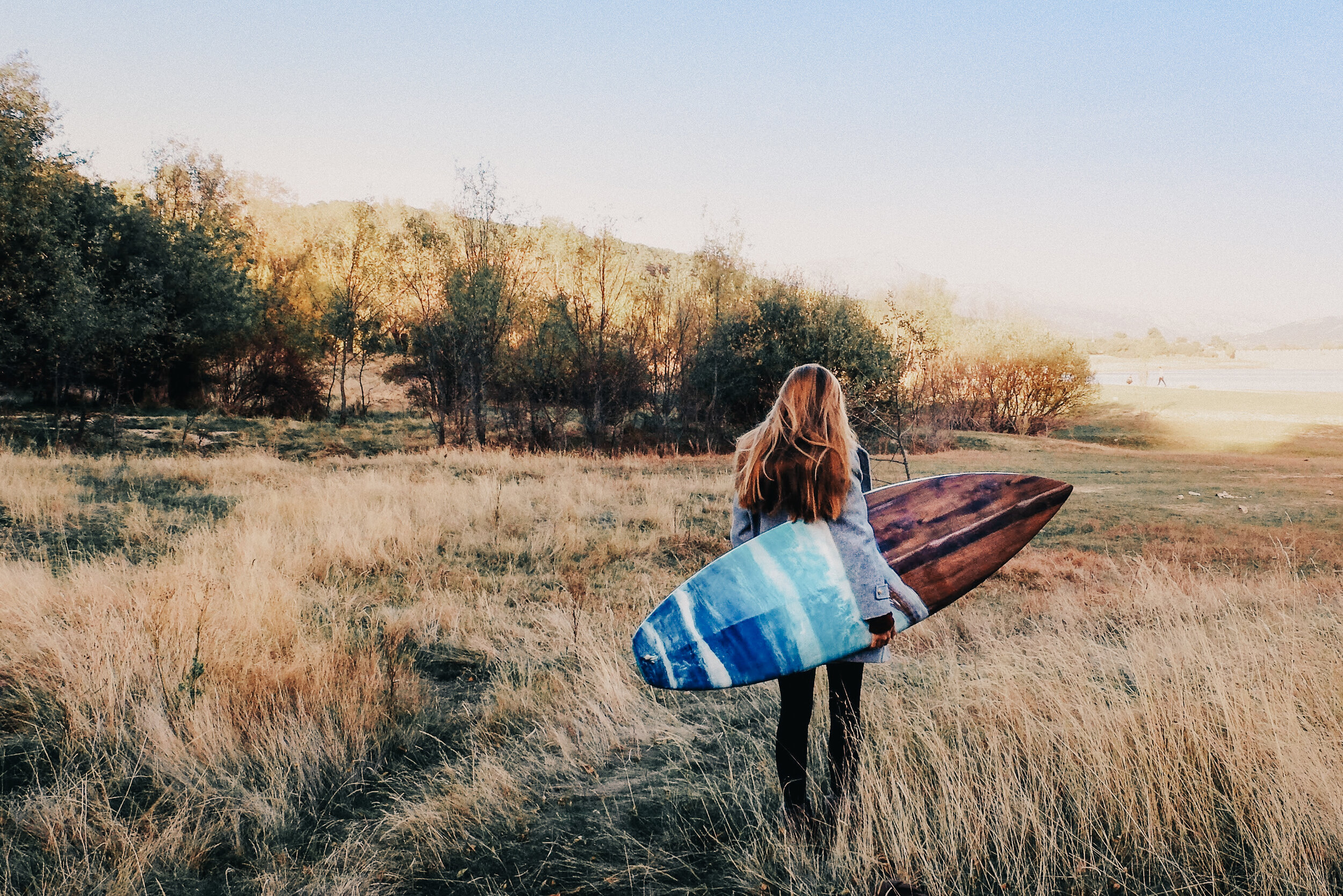Rocío Iglesias Ruiz
Surfing, in general, is relatively otherworldly. Whether or not you’ve ever even popped up on a foam board, there’s something jaw-droppingly epic about the feats of human ability and endurance on display in surf films shot in locations across the globe. The water, alone, is a thing of beauty. The waves are massive & terrifying, or gentle and curling. And the coastal landscapes, color-graded to perfection, are breathtaking. You’re either intimidated or inspired, terrified or tranquil. Or all of it, simultaneously.
Creating art that seeks to capture and evoke that rollercoaster-esque blend of emotion will always be a challenge. But whether it’s through a flashy WSL highlight reel, a crowdsourced surf documentary, or simply the clean finish on a new board crafted by some unsung hero local shaper, there’s beauty in the journey, and achievement in simply acknowledging our need, as humans, for travel, discovery, and a taste for adventure.
Rocío Iglesias Ruiz’s work does exactly that. With a talent for painting, glazing, and resin-rinsing, she restores the most worn-down of boards & fins, and in doing so gives them a second life. Her designs, inspired in part by a handful of top-shelf surf films, transport us to a part of the world not often recognized for its unique surf culture. And in an era of lockdowns & travel restrictions, those gradients of blue & turquoise instill a sense of calm.
This is surf art designed for surfers, and all those pining for freer, simpler times and a scenic mid-morning view of teal-blue waters and white sandy beaches. Dive in.
Where did the idea to start painting fins & other surf accessories come from?
Ever since I started surfing when I was 11, I always wanted my own surfboard. I even used to do surfboard designs on paper, but I never had one of my own. One of the biggest moments of my life was when I finally saved enough money, went on exchange in Australia, and bought my first surfboard. I remember I’d seen all these super cool designs on the internet, custom surfboards, but they were so expensive, so I just bought a super simple white & green fish model.
The proper painting of fins & boards started three years ago, a couple months after I got back from Sydney. I was back in Madrid starting in on my final thesis, finalizing my degree, and I didn't know what to do with my life next. But I’ve always known that I find inspiration in drawing – that’s when ideas come to me.
At the time I really missed Australia. I’d brought my surfboard back [to Spain], and it meant a lot to me because it reminded me of so many happy moments, with the most amazing people there. But it was there just laying the garage, unused, so that’s when I decided to paint it. I started in on the three fins first, and honestly it took me a lot of time, and a ton of trial & error, to paint them successfully, but it was so much fun. I loved the process and it actually really inspired me for my thesis, which was the original objective. After that I started learning more about the whole surfboard design process – how surfers make boards, how they shape them & paint them, etc.
What inspires you when you’re painting?
I've always been a super fan of surf culture, and places like Hawaii, Australia, and California have always inspired me. Plus, that experience of living in Australia — getting to surf at Manly, Bondi, and Maroubra — was literally a dream come true.
I learned to surf in Spain, but for those of us who live here, those three places are the reference, especially because of all the surf films. The first one I ever saw was Chasing Mavericks, which was crazy because I didn’t know anything about big wave surfing, and I learned so much about the sacrifice involved in training for those type of waves. I also love Soul Surfer because Bethany Hamilton’s story is all about bravery. And then I really enjoyed Blue Crush because I learned a lot about the Banzai Pipeline, and how challenging it is. That one’s unique because it’s about personal success, especially in a contest. I’ve been in surf contests, and it’s tough, but the truth is the most important thing is doing your best and surfing the way you've been trying to during your training. One of the reasons I love that movie is because the main character comes in second place and it's still one of the best days of her life.
View From A Blue Moon though was the absolute game-changer for me. It's one of my favorite films of all time and it's actually been one of my biggest inspirations in terms of design, especially for tones and color. It’s the combination of all those aerial shots, with the soundtrack, and those shades of blue, and all the sea sceneries. That stuff has been stuck in my head ever since I saw it. That movie honestly saved my surf art. A lot of the time I’ll listen to the soundtrack when I’m painting.
What were some of the pivotal moments in learning how to create your fin designs?
I started off researching on Google and Pinterest. I’d put in “fin designs and materials,” and it was tough because I didn’t just want to build them just for decoration – I also wanted to put them on my surfboard and be able to use them in the water without the paint coming off.
Around the time I was doing research, Mandala art was becoming super popular, and I really liked that concept so I dove into that, and started checking YouTube videos on tips & tricks on how to paint fins. I also asked some local surfers in Galicia about the specific materials, because spray painting can be tricky at first. Overall though it's been self-taught, with a little bit of asking professionals for advice.
What were some of the main challenges that you faced?
The biggest challenge is gathering the right materials. Professional shapers who live in surf communities near the beach have access to all these specific materials, totally different from what I can usually get in Madrid. I had to find alternatives, like spray paint, for example. At first I had no idea how to paint with spray paint, and I only had three fins to practice with, so every single one was crucial. If I messed up, there weren’t any more to try. [Laughs]
That being said, there is one technique I found recently that definitely changed how I work. One day during the lockdown in Madrid I was scrolling through Instagram and I discovered something called resin art. The color tones I saw people using instantly reminded me of View From a Blue Moon. I really wanted to try it, but again the materials are hard to find, and it’s also a technique that depends a lot on external factors, like room temperature, and how you combine the components to get the right chemical reactions. For example, how well the waves/ripple effect comes out depends on how well you use the dryer, and how the materials are mixed. It gets so messy, and it’s been super challenging.
What’s resin art?
So normally it’s a process for making furniture called “river tables,” and up until recently it was more so used on an industrial scale. In the past few years though a lot of people have started making jewels & accessories with it. Once it dries and gets hard, it's like plastic, so a lot of artists use it to make canvases. I wanted to adapt it to be a little bit different, because from what I've seen, especially on social media, there aren’t so many people doing surf art with resin techniques.
And you can actually use these fins & boards in the water?!
Yes! That was my first objective: I had my surfboard and my fins, so I was like, “I really want to decorate these.” But that process took me a long time. If you don't do it the right way, three times in the water and the color will come off. [Laughs]
Living in Madrid definitely makes getting materials tough though. Today, for example, I ordered 10 fins for a new collection, and they told me that it’s going to take at least 3 weeks to arrive. Back in 2017, when I started, Amazon wasn't a big thing here in Spain, so I had to be like, “OK, I'm gonna try my best, develop everything I can, and then just go for it for my surfboard.”
A lot of people know me because I’m always talking about surfing & surf trips. It's definitely a big part of my identity. Over the last year I found myself asking, “If I want to give someone a gift, something that's representative of me, what could I do?” So I took a break and went back to designing the fins more from a decoration perspective, and that's when I came up with the idea for the Summer collection, solely for decoration. It’s based on the views of the beach & ocean from above, especially the range of colors from [View From A Blue Moon.]
I love the stories you put up on social media, especially with your particular effects & framing. What made you want to develop that sense of aesthetic?
These days I’m always trying to portray the process of making [the fins & the boards], because I think it’s super cool for people to see how it started, and then the whole process and how it turned out. It takes so many layers of paint for each fin & surfboard, and with the resin, each layer takes 12 hours to one day to cure, so you have to wait. It’s really a process, over almost three days. Ordinarily I’m super impatient, but this is actually helping me to build that patience that I normally wouldn't have.
What advice would you give to your younger designer & illustrator self?
Most people don't think to try, experiment, and especially have fun in the process. I've always been a perfectionist — I want to do it right the first time and have it be perfect, but with art it’s never that simple. You have to find your own identity and see what works, what doesn't, what you're good at, and what you're not. Above all else, you have to fail so many times, because that makes it that much better when you finally achieve [what you were going for.]
Another really important thing I learned, mostly through school, is to accept critiques, because even if they're bad, or at least initially bad, they're always constructive – there’s always something you can learn.
What I would say to my younger self is: never give up on painting, even when it feels like there’s no time for it. Painting has helped me so much, especially to get inspiration when I’m feeling uninspired. Even during university, or work, it's important to follow your passion. Even if you don't have time, you can always make a bit of time.
What is ‘upcycling’ and what does it mean to you?
I've always been super conscious about nature, preserving the environment, and taking small actions to improve our planet. It frustrates me every time I go to the beach and see so much trash. There was one day when I was painting the fins on my old surfboard (the board itself is a little bit broken after so many years, but of course I didn’t want to throw it away) and I had this thought that it deserved a second life. I've seen so many surfboards that are like old, with the paint worn off, just being thrown away. My goal is to repaint them and restore them.
Another thing that really made me change my perspective was reading a book called “Let My People Go Surfing,” about the Patagonia story. How they built the company, and the values they hold … it’s amazing. They do a lot of recycling and upcycling of their own clothing, so in reading that I got a more serious idea about recycling surfboards. There are so many old surfboards out there that no one uses – repainting them and using them as decoration gives them a second life. I shared this vision with a really good friend of mine, and that's when he donated two of his old boards to me. It was crazy because my own surfboard was broken so I was actually going to buy a new one, and then here I have this guy saying, “I'm gonna give you 2 surfboards.”
“I started surfing with the local surf schools when I was little, and those people have become almost like my family … They’ve shaped who I am as a Surfer & a person.”
How does your relationship with Spain, and especially the region of Galicia, inspire your work?
So I'm from Madrid, which is in the middle of Spain, 500 kilometers away from any beach. The closest beach is literally 3 & ½ hours away, so normally I can only surf around the holidays. When I do go, though, Galicia is my happy place. It's a magical region in Northwest Spain, very close to Portugal – I go there every August with my family, to this town called Viveiro, and we spend the whole summer there. Honestly I’d encourage everyone to visit.
The region actually holds an international surfing contest, called the Pantín Classic Pro, with big-name surfers from all over the world, and around the same time there’s this massive rock festival, called Resurrection Fest. Literally this festival draws people from all over the country, so it’s funny because it’s this little village kind of like, lost in Galicia, but it’s got these two huge cool things. It’s a mixture of the most traditional side of Spain, and then this super modern rock festival, and a giant surf contest.
But the best parts are the people and surfing. The culture is amazing, and the people there are super friendly, hard-working, and humble. A lot of them are entrepreneurs, and they really inspire me. I’m not a foreigner, but I’m not technically a local either – I’m what they call a “semi-local.” But the community is so friendly regardless – they say “hi” in and out of the water. I started surfing with the local surf schools when I was little, and those people have become almost like my family. A lot of them helped shape who I am both as a surfer and as a person.
It’s crazy too because the surf culture there is expanding so much. There are surfing schools that started off super small, and now they're literally forming the future by training these surfing legends, taking them to contests, basically revolutionizing surfing in Spain.

